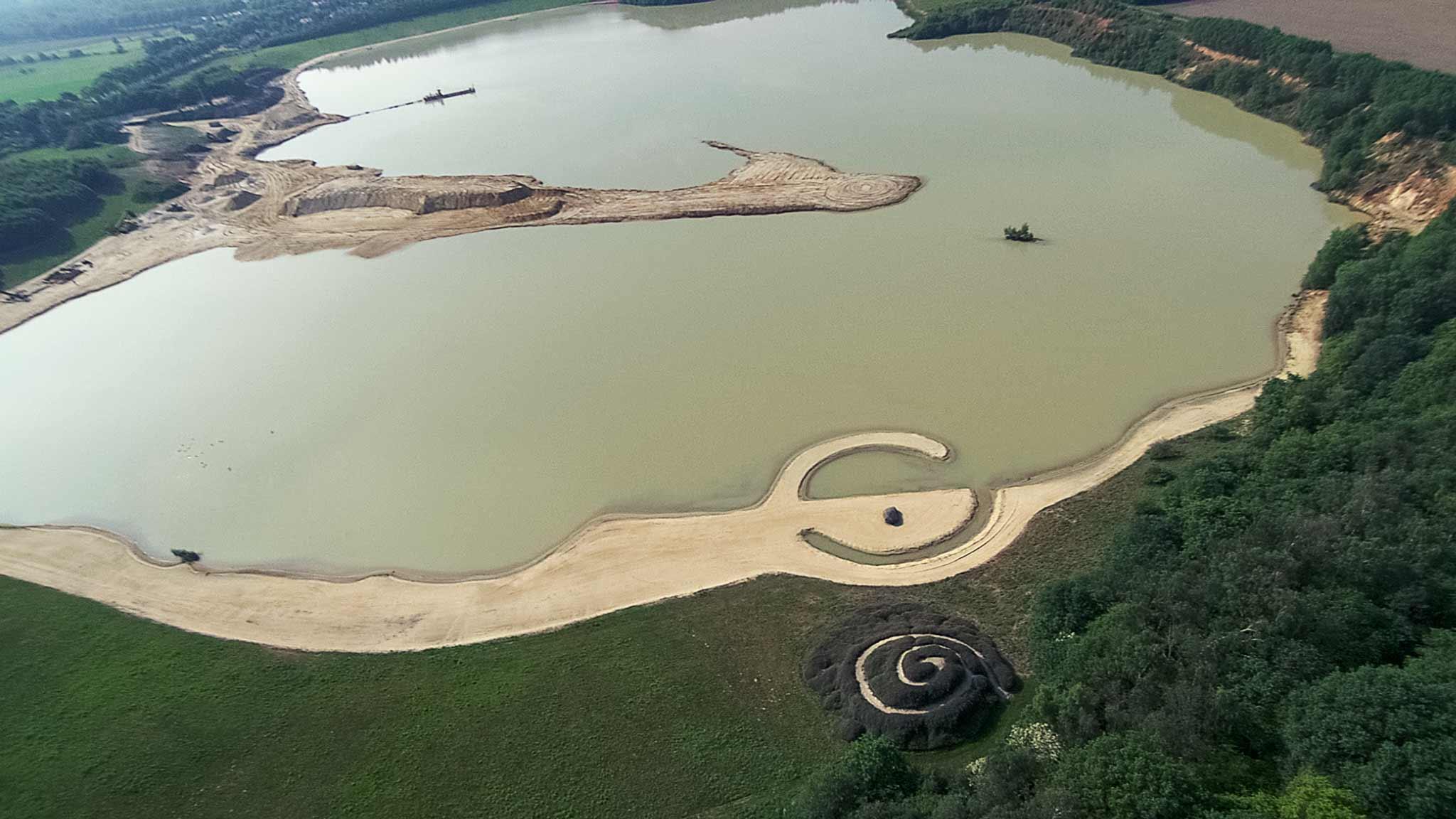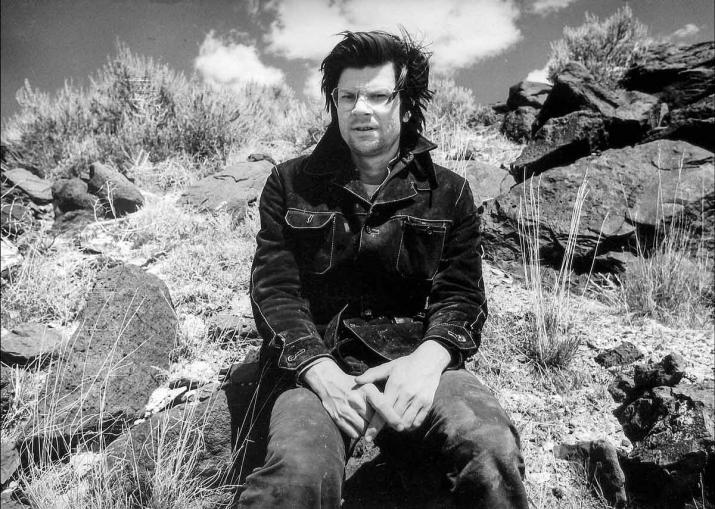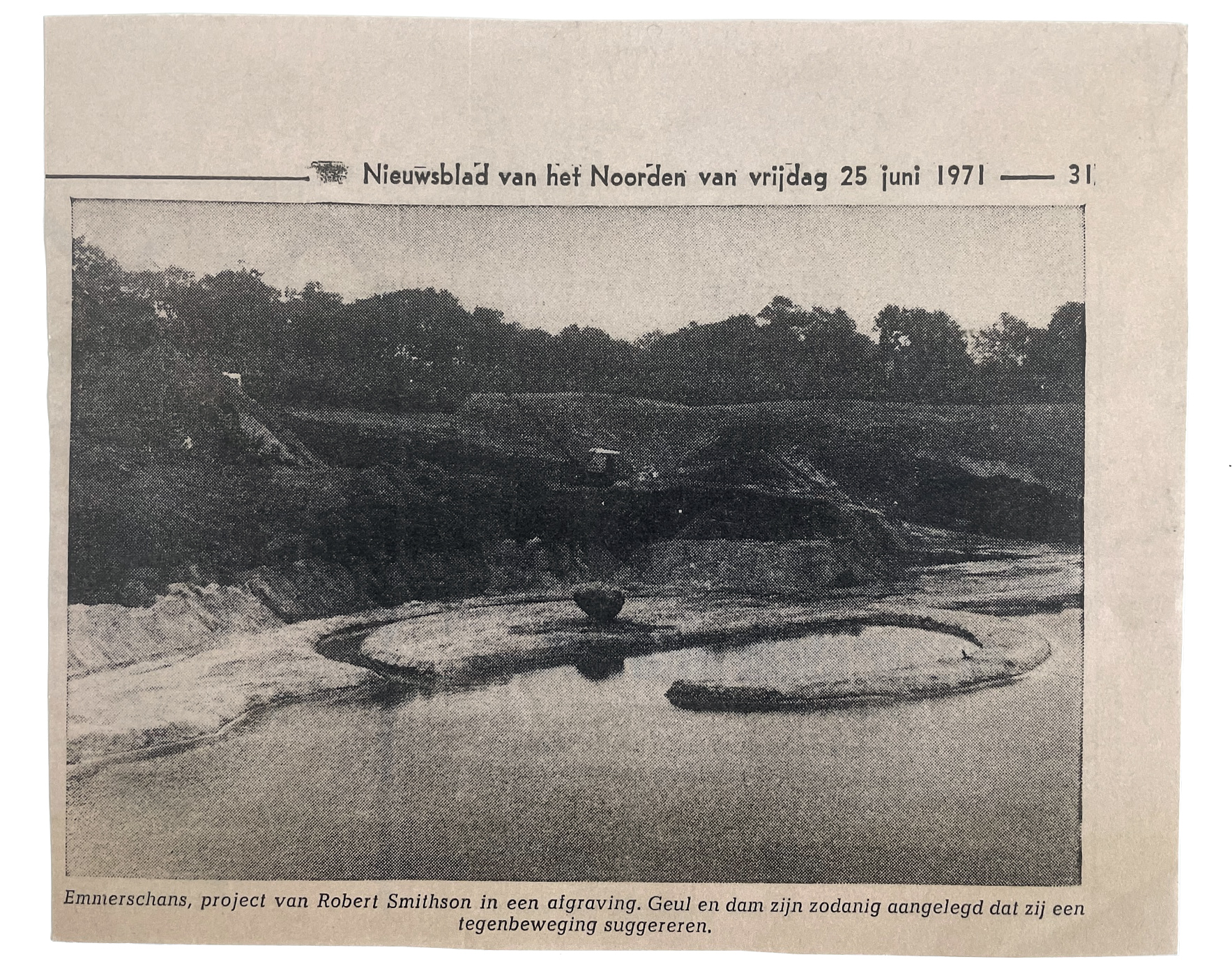
Foto: Aerophoto (17 Juni 1992)
LEARN
The artwork Broken Circle/Spiral Hill by American artist Robert Smithson was created in 1971 especially for the now legendary Sonsbeek Buiten de Perken exhibition in an active sand quarry just outside Emmen. It is Robert Smithson's only earthwork outside of the United States.

Filmstill from "Nancy Holt and Robert Smithson, Breaking Ground: Broken Circle/Spiral Hill (1971-2011)"
Filmimages: Nancy Holt (1971), Benito Strangio (2011)
Broken Circle/Spiral Hill
Broken Circle/Spiral Hill (1971) is located in Emmen, in the province of Drenthe. Commissioned for the 1971 edition of the recurring outdoor exhibition Sonsbeek, it is his only earthwork outside the United States.
Broken Circle/Spiral Hill is sited in a former sand-mine, cut into the side of a terminal moraine. It is an artwork of two parts. Broken Circle is a semi-circular jetty built into the quarry lake, filled with reflecting green water. Spiral Hill rises into a cone-shaped hill beside the lake. A spiraling path leads to the top, from where the quarry and Broken Circle can be seen from above. At the center is an immovable huge boulder deposited by the ancient glacial movements.
Smithson described this as “a major piece” and it sparked his interest in working with industry and post-industrial landscape to make art “a necessary part of their reclamation projects.” The geological and industrial history of the Drenthe region drew Smithson to Emmen. He was fascinated by the constructed landscape of The Netherlands. Smithson was interested in “landscapes that suggest prehistory. As an artist it is sort of interesting to take on the persona of a geological agent where man actually becomes part of that process rather than overcoming it.” Smithson was committed to working with landscapes scarred by industry, thinking through future uses for exhausted landscapes.
Robert Smithson

Robert Smithson at Spiral Jetty. Photo: Unknown, ca. 1970
Robert Smithson (1938-73) was a visionary artist who expanded what art could be and where it could be found. For over fifty years his work, writings, and ideas have influenced artists and thinkers, building the ground from which contemporary art has grown.
Smithson is best known for his earthworks Spiral Jetty (1970, Great Salt Lake, Utah), Broken Circle/Spiral Hill (1971, Emmen), and Amarillo Ramp (1973, Amarillo, Texas). His interests moved through travel, cartography, geology, architectural ruins, prehistory, philosophy, science fiction, popular culture, and language.
In his short and prolific life, Smithson produced paintings, drawings, sculpture, earthworks, architectural schemes, films and video, photographs and slideworks, writings, and all the stops between. Smithson raised questions about our place in the world, exploring the conceptual and physical boundaries of knowledge. From his landmark earthworks to his quasi-minimalist sculptures, Nonsites, writings, proposals, collages, detailed drawings and radical rethinking of landscape, Smithson's ideas are profoundly urgent for our times.
His works are held in museum collections around the world including Dia Art Foundation, New York; Museum of Modern Art, New York; National Gallery of Australia, Canberra; National Museum of Modern Art, Tokyo; Solomon R. Guggenheim Museum, New York; and the Whitney Museum of American Art, New York.
"Nature is never finished."
ROBERT SMITHSON
Past, present and future
Robert Smithson’s Broken Circle/Spiral Hill is an artwork with a rich history, with a deep resonance for the present, and with an unknown future. Our ambition is to build a sustainable future for the artwork, to enable it to inspire future generations.
Smithson is known to have donated the artwork to the people of The Netherlands, however the specifics of how the work should be cared for and who should take responsibility for the land on which it sits is unknown. Since 1971, the generosity of the sand mine owners has enabled Broken Circle/Spiral Hill to be visited and appreciated by local, national, and international visitors for five decades. Land Art Contemporary and Holt/Smithson Foundation have the ambition to work with the current land owners towards a sustainable future for Broken Circle/Spiral Hill, so that it can continue to be a source of inspiration for future generations.
Partners
“On the fiftieth anniversary of Robert Smithson’s Broken Circle/Spiral Hill (1971), Land Art Contemporary and Holt/ Smithson Foundation are thinking through the sustained future of this landmark example of Land Art. Broken Circle/ Spiral Hill is one of the most significant examples of Land Art in the world, and the only permanently sited earthwork by the artist outside the United States.”
Lisa Le Feuvre, executive director Holt/Smithson Foundation, Anne Reenders, program director Land Art Contemporary.

Nieuwsblad van het Noorden. (Friday June 25, 1971)
Subscribe to our newsletter.
All artworks and images by Nancy Holt and Robert Smithson are copyright Holt/Smithson Foundation, licensed by VAGA at ARS, New York.



